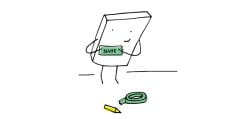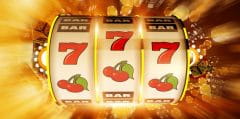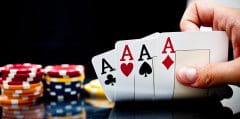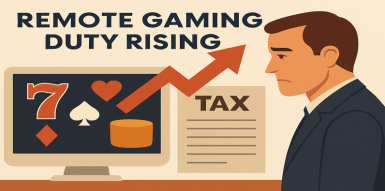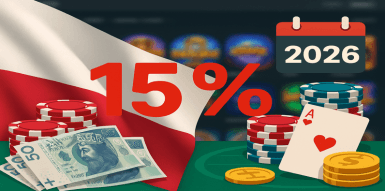What Is Edge Sorting and How Did Phil Ivey Use It to Win $20 Million
Betting on a coin-toss. That’s how your chances of winning at baccarat are best described. The popular casino game has one of the lowest house edges you will find, and doesn’t require any skill at all. Card game experts claim that even if you are a complete rookie, as soon as you are dealt your first hand, you have the same chances of winning as any veteran gambler. However, back in 2012, poker icon Phil Ivey astonished the world when he went on a winning streak that totaled more than $20 million. It seemed that he had managed to beat the odds – but just how did he do it?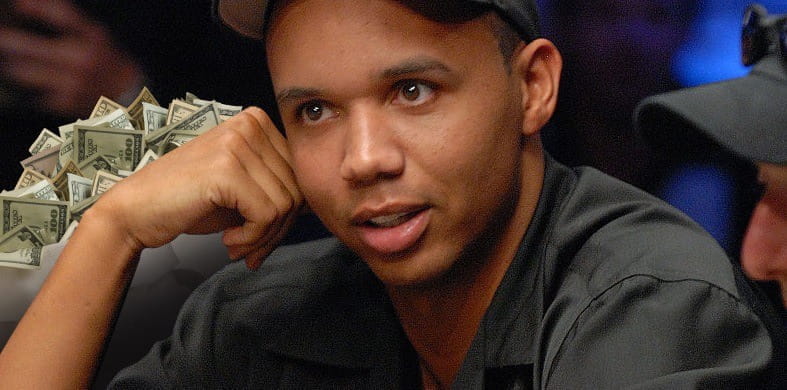
The Edgy Story of Ivey’s Triumph
Phil Ivey is a well-known name in the world of gambling. The New Jersey lad has been one of the most prominent poker players since the turn of the century, winning ten World Series of Poker bracelets, one World Poker Tour final, and a place in the Poker Hall of Fame. At one time, he even joined the infamous Corporation in their high-stakes struggles against gambling billionaire Andrew Beal (also known as ‘The Banker’ in Michael Craig’s famous gambling book). The Dallas-based businessman walked out of the match against Ivey $16.6 million lighter, though this didn’t hurt his net worth much.
All of this means that Phil Ivey is rich. Not filthy rich, but pretty damn close. His face is a welcome sight at many land-based casinos because he likes to play with high stakes – and as you know, the house always wins in the long run. It is quite different from playing with the best casino bonuses at online gambling sites where you first need to wager your bonus money until being eligible to withdraw any potential winnings. With this in mind, let’s get back to the land-based gambling sites and actually some of the most popular ones in the world. When Ivey walked into Atalanta City’s Borgata Casino together with a mysterious Chinese woman, there must have been a lot of gleeful rubbing of hands. Having the high-rolling ‘Tiger Woods of Poker‘ as a guest is good PR, and when he wants to play baccarat of all games, then there is also the potential for a tidy profit.
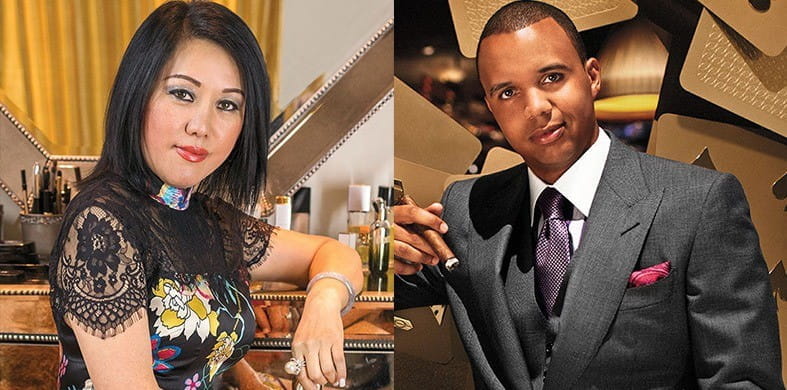
However, there weren’t many smiling faces when Ivey walked out with $9.6 million just a few days later. The casino officials were stupefied. You simply couldn’t be that lucky at baccarat – but they had failed to catch Ivey cheating in any way! The man hadn’t even tried to touch the cards, and as the Royal baccarat gambling scandal has proven in the UK, there is little you can do without interfering with the rules of the game. True, the casino had given Ivey the Mandarin-speaking croupier he had demanded because of his partner and obeyed all his ‘good luck’ requests, but it’s common practice to be less strict with VIP guests.
The same thing happened a few months later in London, at the Crockfords Club. Ivey walked in with his Chinese companion and demanded to play baccarat in a private room with a special croupier. Once more, his demands were met, and this time he managed to win £7.6 million – but the casino only paid out his initial stake of £1 million. When the outraged poker star demanded to know what had happened with the rest of his winnings, the casino officials explained that the money would be withheld. According to them, Ivey had used something called ‘edge sorting’.
The jig was up.
So, What Is Edge Sorting?
Nothing new, as it turns out. Edge sorting has been around for ages, but it is hard to master, harder still to utilise – and very hard to catch. Much like card counting, it can go under the radar. Before Ivey’s stunning rampage, most casinos hadn’t even heard about edge sorting.
The technique relies on small irregularities in the patterns on the backs of cards. Don’t expect anything obvious, of course. Observe the example below. As you will (maybe) see, there is a subtle difference between the size of the partial shapes on the edges of the cards. They are bigger on one side than on the other. You are probably wondering how this can help at all. It is not a marking that allows you to recognise a specific card, but a common pattern for all cards in the deck.
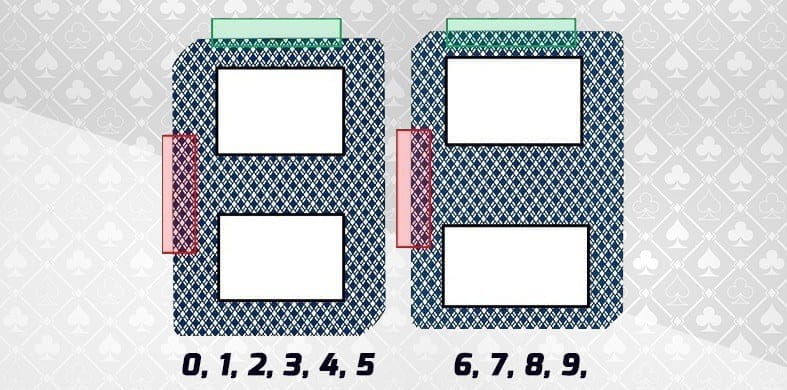
The truth is very simple – edge sorting allows you to recognise cards that have been rotated. As you well know, there is no upside-down with cards, they are perfectly symmetrical – or at least their fronts are. However, if you manage to rotate a card – and have a very keen eye – you will be able to tell its back apart from the rest. Of course, a single card a hefty winning does not make. However, in a simple game like baccarat, a patient player might be able to sort all of the cards in the deck into ‘good’ and ‘bad’. This would allow him to know when an advantageous card would be dealt, and to adjust his stake accordingly. In other words, the house edge would be turned on its head – and transform into a player edge!
Of course, using this technique has some very important (and improbable) requirements. First off, you need to have trained your visual acuity vigorously – after all, looking at the backs of the cards with a magnifying glass would be extremely suspicious! In most cases, you need to be able to discern the minuscule difference in the pattern while only one of the edges is sticking out of a shuffling machine.
After you have familiarised yourself with the card pattern, you would need to find a compliant dealer who would allow you to turn cards, and keep the same deck between the games. Naturally, this is nearly impossible to achieve… unless you have a high-rolling VIP like Phil Ivey tagging along.
Phil Ivey and the ‘Queen of Sorts’
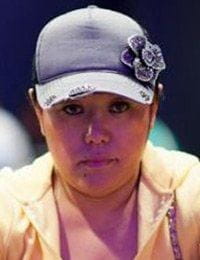 In reality, Phil Ivey could not handle edge sorting. He had never trained to do so. The poker star was needed because he was famous enough to get favourable treatment by the casino officials. As you may have guessed, the mastermind behind the whole endeavour was his Chinese companion – Cheung Yin ‘Kelly’ Sun. An heiress of a rich Chinese family, she had been a regular customer of US casinos for ages. However, a stint in a Las Vegas prison due to an unpaid casino-marker filled Kelly with a lust for revenge. Edge sorting turned out to be the perfect means of accomplishing her goals. After meticulous studies and hard training, Kelly Sun mastered the still obscure technique and set out on a baccarat rampage. She made quite the reputation in certain circles, and quickly became known as the ‘Queen of Sorts’. However, to strike big she still needed a VIP partner – and Phil Ivey was the perfect candidate.
In reality, Phil Ivey could not handle edge sorting. He had never trained to do so. The poker star was needed because he was famous enough to get favourable treatment by the casino officials. As you may have guessed, the mastermind behind the whole endeavour was his Chinese companion – Cheung Yin ‘Kelly’ Sun. An heiress of a rich Chinese family, she had been a regular customer of US casinos for ages. However, a stint in a Las Vegas prison due to an unpaid casino-marker filled Kelly with a lust for revenge. Edge sorting turned out to be the perfect means of accomplishing her goals. After meticulous studies and hard training, Kelly Sun mastered the still obscure technique and set out on a baccarat rampage. She made quite the reputation in certain circles, and quickly became known as the ‘Queen of Sorts’. However, to strike big she still needed a VIP partner – and Phil Ivey was the perfect candidate.
“I was in jail for three weeks. Women attacked me, and the guards wouldn’t let me wear my own underwear. I lost 25 pounds in jail and didn’t get out until a relative flew here with $100,000 for the casino. I decided that one day I would get back the money by playing at MGM properties.”
The poker icon became Kelly’s ‘big’ player, the one who would handle the game and do the betting. However, crafty Kelly was the one who did the vital edge sorting. She would convince the Mandarin-speaking croupier to rotate specific cards ‘for good luck’, and then keep track of them. In this way, she would slowly sort all the cards in the deck into ‘good’ and ‘bad’, and then give Ivey specific signals to up the stake when an advantageous card would be dealt. If you play baccarat like that, racking up a record winning becomes surprisingly easy.
The Outcome – Is Edge Sorting Cheating?
If you follow gambling news, you may already know what happened after Crockfords refused to pay Ivey his winnings. At long last, the world came to know about edge sorting. Phil Ivey got involved in two very convoluted cases against both Crockfords and Borgata – suing the former for his winnings and getting sued by the latter. Naturally, both cases dragged on for years.
The problem was that at the time, edge sorting was not considered cheating – most casinos simply didn’t know about it. However, with Borgata wanting their $10 million back, and Ivey demanding almost £8 million from Crockfords, the authorities had to get involved. Matters got complicated when Ivey outright admitted to using edge sorting but called it ‘legitimate gamesmanship’. The crux of his defence was his interpretation of edge sorting as an ‘advantage play’ technique.
“If he had surreptitiously gained access to the shoe and rearranged the cards physically himself, no one would begin to doubt that he was cheating. He accomplished exactly the same result through the unwitting but directed actions of the croupier, tricking her into thinking that what she did was irrelevant.”
As it turned out, Phil and the authorities did not see eye to eye. He lost both cases, even though further appeals by the poker star are still getting processed. Edge sorting has now officially been recognised as a cheating technique, and casino authorities are changing their internal procedures in order to counter it. Still, the audacity of their scam is really quite amazing. We wouldn’t be surprised to see their story on the big screen one day, as it is more than worthy of a movie adaptation!
“That it was clever and skilful, and must have involved remarkably sharp eyes, cannot alter that truth.”
How Would Edge Sorting Work in Baccarat?
To understand how edge sorting could potentially be helpful, let’s first briefly discuss Baccarat’s main game rules. Baccarat is played by 14 players and the place where each player should bet is marked with the numbers 1-15. Number 13 is strategically skipped for superstitious reasons. The table is marked with three boxes in front of each player’s number to place his bets. There is a box for the player’s and the banker’s bets and another one for bets for a tie. Baccarat is usually played with 6, 8 or 9 decks of cards depending on the casino. The game’s aim is to get as close as possible to 9 points. Ace is counted as 1, King, Queen, Jack and 10 as 10 and all cards 2-9 are worth their face value. Thus, automatically 6, 7, 8 and 9 become the most important cards in the game. Edge Sorting would undoubtedly be advantageous in this situation as it would allow the player to guess whether the card that would be dealt belongs to this group of cards and therefore decide whether to place his bet on the banker or on the player’s box. According to statistics, edge sorting could help the player to gain an edge of 6.79% over the house and to make sure that luck is always on his side.
Edge Sorting and Blackjack
The main object of the game blackjack is to defeat the dealer by going as close to 21 as possible but without going over 21. In these terms, using edge sorting could be particularly advantageous to the player as according to statistics it would allow the player to gain an edge of more than 18% over the house. All the player must do is master the edge sorting technique and identify the card which is to be dealt with the game’s next round. It would particularly beneficial if the player can identify whether the next card to be dealt is a 10 or an ace. Thus, edge sorting could not only help the player decide how much would be beneficial to bet but also whether it would be more advantageous to ‘sit’ or to be ‘hit’ during a round. However, as we have established above edge sorting is now considered cheating in all casinos and using such a technique would not guarantee that you would actually walk out any richer.

